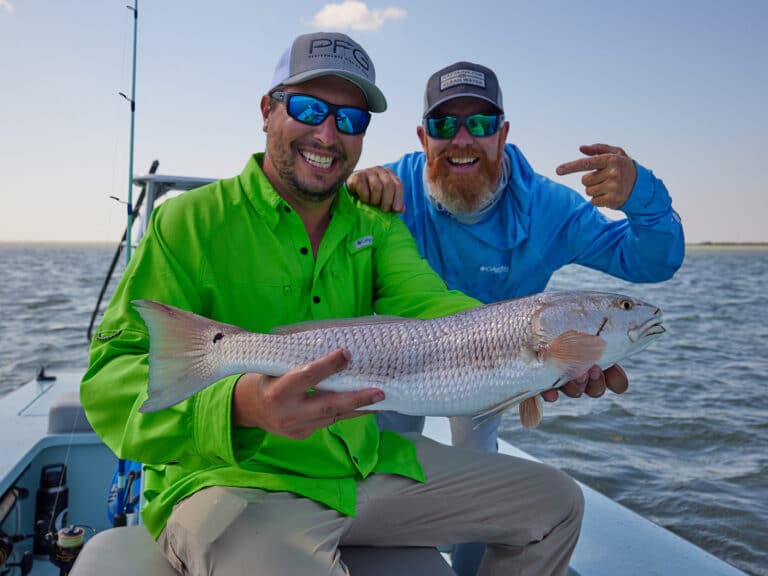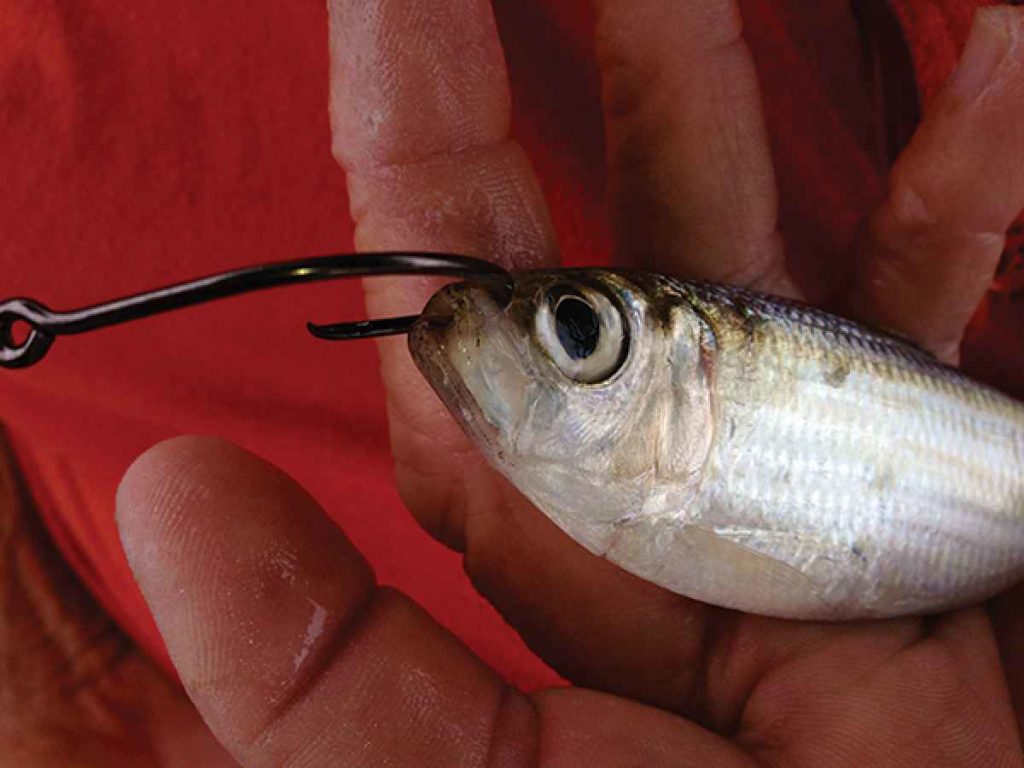
A livewell full of frisky, live bait fish can be a dangerous thing for the species you’re seeking. But as close a “guarantee” as they can give, some adjustments to how you hook live bait can make your bait swim where and how you want. Recently, a friend and I were drifting live pilchards over the South Florida reefs. The current was slow, so we placed a few baits at the surface. I hooked a pilchard near its throat, and free-lined it on a spinning rod. By briefly stopping the line to restrict its forward motion, I made the bait surge forward to cover more territory. Best yet, the hook weight and placement, and tugging, forced it deeper. On the first drift that bait yielded a sailfish; it was a great start to a day that ultimately produced a few kingfish, blackfin tuna and a dolphin.
What’s the purpose of this story? That knowing how to bait a hook can make all the difference, especially when you’re fishing with live bait fish.
Hook Live Bait in the Nose
Whether you are fishing a hardtail, menhaden, pinfish, goggle-eye, pilchard or herring, “nostril hooking” restricts less of their natural action. It’s by far one of the best techniques for how to rig live bait. This is ideal for surface live-baiting, such as when drifting offshore, around bait schools, and through inlets and passes for surface-oriented fish. When nostril-hooked, the bait swims at or near the surface, keeping pace with the boat’s drift or slow-trolling rate. They remain lively, with little risk of drowning.
With small baits, simply run the hook through the nostrils. On larger baits, bridling the bait through the nostrils keeps the hook fully exposed, so the bait won’t interfere with a hookup. This is ideal when light tackle fishing for striped bass, snook, tarpon, sailfish, tuna, and also heavy-duty drifting over wrecks for big amberjack and grouper. An alternative to nostril hooking is to jaw-hook a bait. Run the hook under the lower jaw and out the upper jaw. Or, with a large bait, run the hook up and out the upper jaw only. Some anglers believe this provides a better hookup percentage with circle hooks versus a nostril rig.
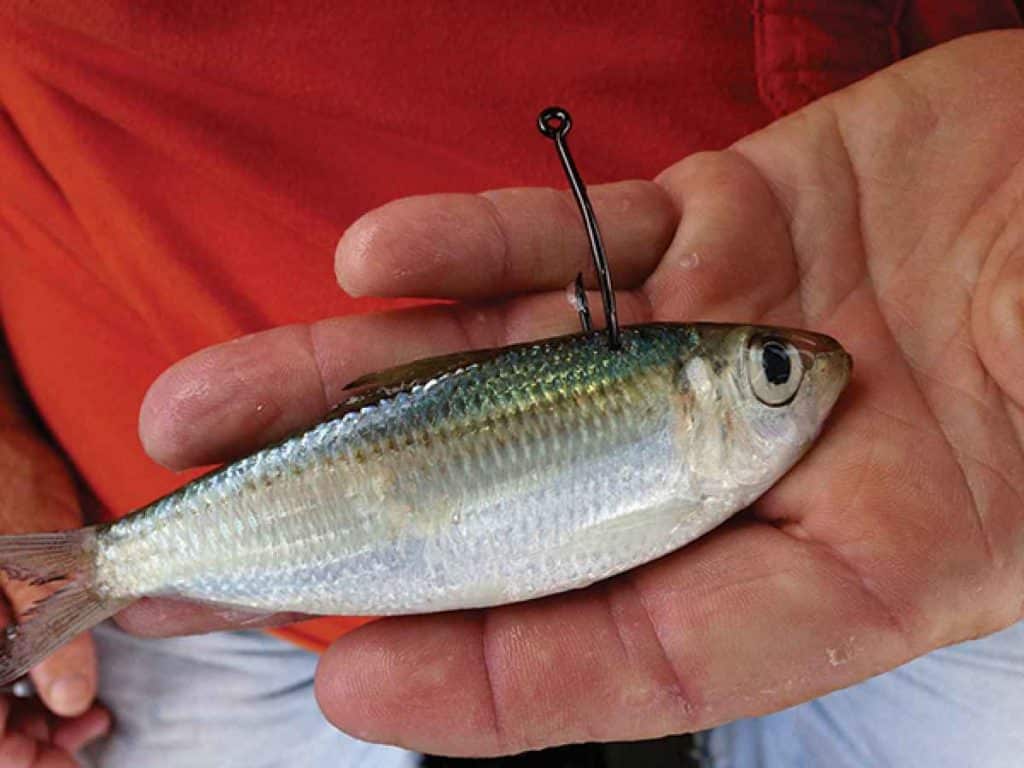
Hook Live Bait in the Dorsal Fin
Hooking a bait in front of its dorsal is deadly for kite-fishing, slow-trolling and still-drifting; it generates action, and the aft placement nabs “short-striking” fish. Hooking in front of the dorsal fin forces a bait to swim head-down and more frantically. These “distress” vibrations draw strikes. The swimming attitude is like a deep-diving swimming plug. What’s more, the degree of digging can be fine-tuned through precise hook placements: For the maximum angle/digging, place the hook right in front of the dorsal fin; for a more level attitude, place the hook more forward of the dorsal fin. Bridling is recommended for pelagics but not necessarily with smaller baits intended for bottomfish.
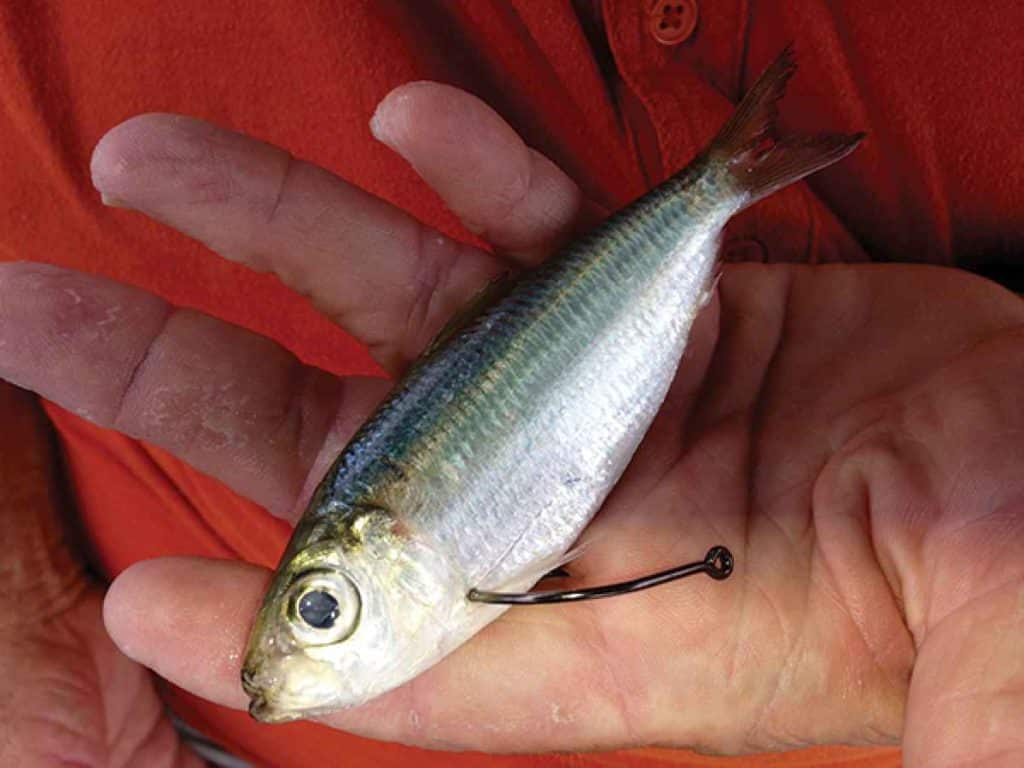
Hook Live Bait in the Throat
Throat hooking forces a bait into the depths, perfect for midlevel fish. It’s a proven tactic when free-lining from a stationary position to jetties, seawalls, pilings or bait schools, as well as for bottomfishing from an anchored boat. It’s also good when slow-drifting. To manipulate the bait, free-line it, and then pause the line for several seconds and continue to free-spool. Repeat until the bait is in place. Every pause prompts it to swim harder, and a low, forward hook placement forces the bait to swim deeper. When anchored for bottomfish, fishing a sinker behind a leader ranging from 5 to 40 feet long, the sinker rests on the bottom while the bait scurries just off the ocean floor with the freedom of the long leader.
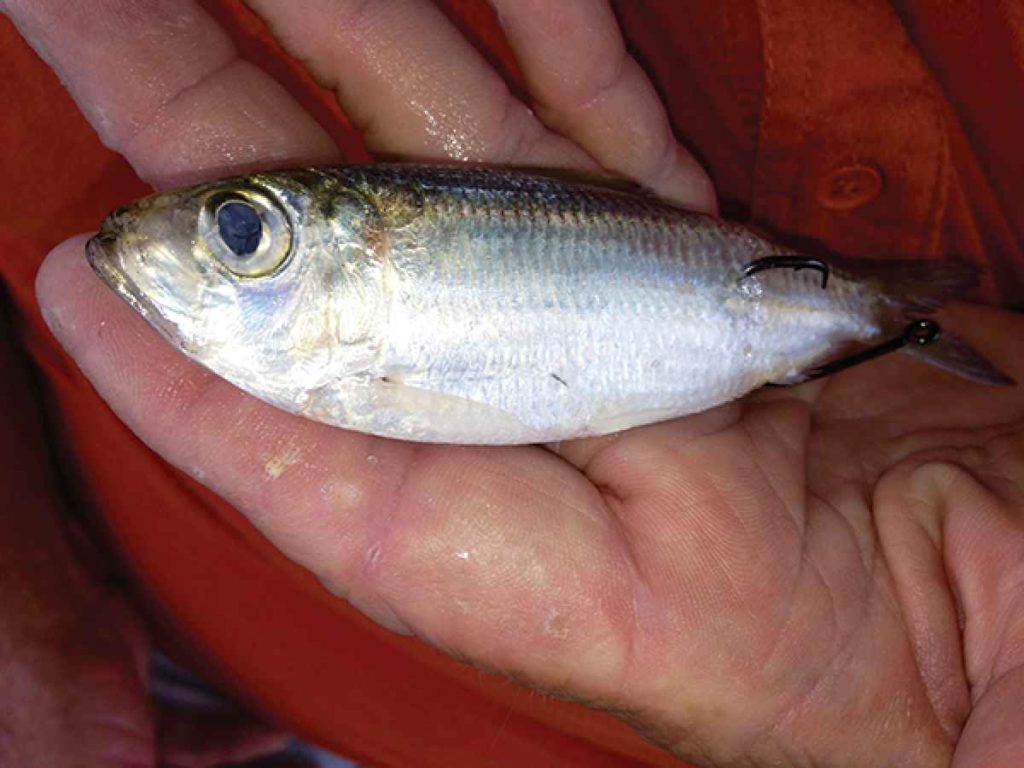
Hook Live Bait in the Anal Fin
A bait hooked near its anal fin can be manipulated into a specific area. It’s also a great way to make baits swim away from a stationary platform, like a pier, jetty, bridge, beach or shoreline. Similar to a throat-hooked bait, without forward momentum, the bait can’t breathe; it panics and swims forward aggressively, enabling the angler to guide it farther away, or to a specific spot. This is a good bottom and even middepth bait with a long leader, such as 30 to 40 feet common when rigging for mutton snapper, because the extra-long leader provides enough latitude for the bait to swim. Offshore anglers can free-line the bait out a few hundred yards, jerk it off the hook, reel in, and then rebait with a fresh one. A constantly working live-bait rod is an excellent addition for pelagics, particularly when live-chumming.
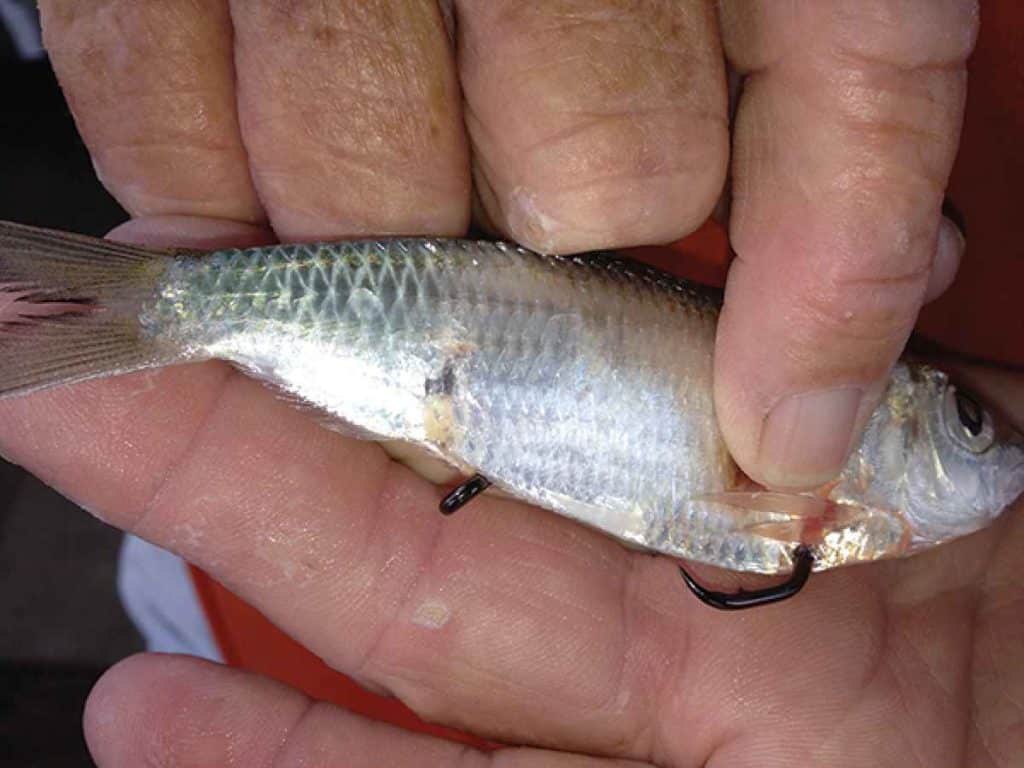
Hook Live Bait in the Anal Vent
When anchored and live-baiting for grouper and snapper with smaller live baits such as pilchards, herring or pinfish, threading the hook through the bait’s anal cavity and out near its stomach causes the bait to wobble and dart head-up, as if it’s injured. These panicked vibrations and the action of the distressed baitfish triggers predators to strike. The midbait hook placement virtually guarantees a solid hookup. This is an anchored-boat, bottomfishing tactic for passes and inlets, shadow lines along bridges and, of course, wrecks and reefs.








